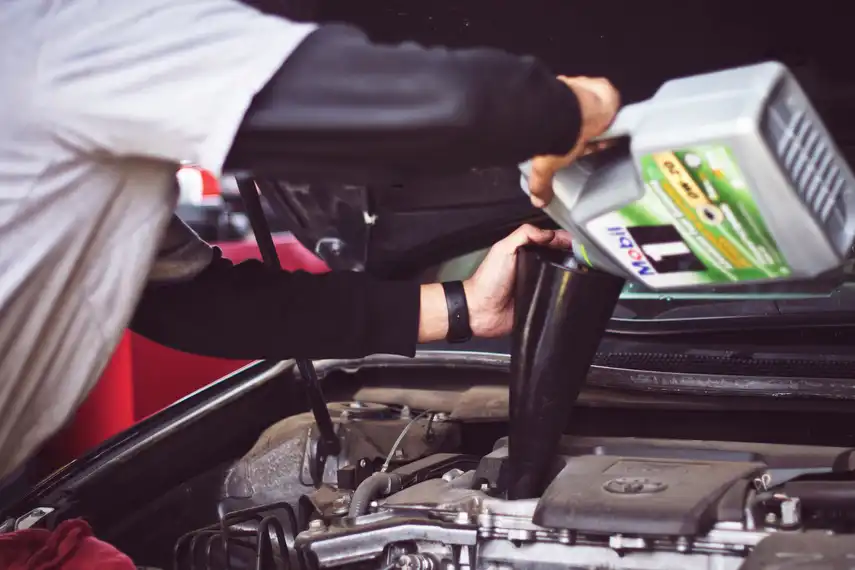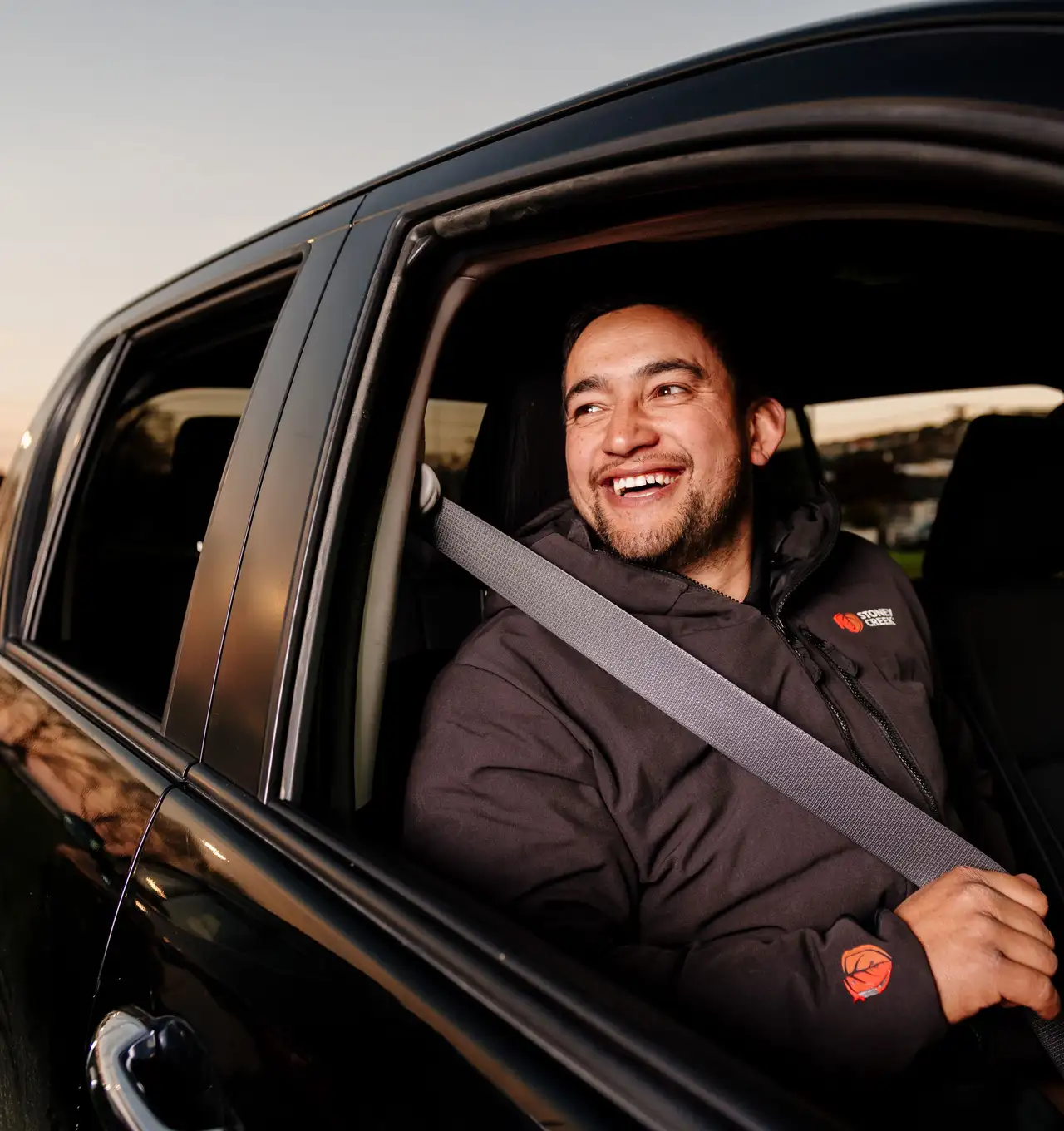Knowing your region
Rhys Pocklington has been in the motor industry since 2000. After working with big-name dealerships, Rhys set up Black & White Motor Company in 2011 and has been helping his customers find the used vehicles that best suit their needs and wants. Black & White Motors is an MTF Finance approved dealer.
Being based in Waltham, Christchurch, Rhys knows how intense winters can be.
“In Canterbury, we get snow, flooding, icy roads – and some serious strain on our cars. But how severe winter can be obviously depends on where you are in the country. A lot of changes between summer and winter in the South Island – could be a swing of 25+ to -4°C – but not as much as the north of the North Island. In the Waikato, you won’t necessarily see snow on the roads, but you do get black ice. Northland can expect some flooding; Southland gets snowed in regularly.”
So his first winter safety pointer for us? Be prepared.
“The first thing you’ve got to do is make sure that you’re ready for the conditions of your region – or across regions, if you’re travelling long distances. The second thing is to expect the unexpected, and plan for anything that might be thrown at you.
“Thirdly, look after your car.”
Replace your battery
Winter’s when battery failure often hits. In the summer, your battery might seem fine: the heat makes it easier to charge, and a warm engine is easier to start. But cooling nights slow down the battery’s ability to undergo the chemical reactions needed to produce a current – and an ailing battery soon becomes a failed one.
It may surprise you to learn that the average car battery lasts between two and five years (but colder conditions in the South shorten that lifespan), so you’re probably due a new unit. A newer battery will be able to recharge more quickly, putting less strain on your engine too.
Check your hoses and seals
Low temperatures make the rubber and synthetic hoses and seals in your car degrade faster (as does direct sunlight); they’ll also shrink and contract in the cold, putting tension on other parts, and running the risk of cracking and leaking – especially in older cars.
If you can, garage your car – this will help prevent it from dropping to the lowest temperatures and help it long-term. But right now, you need to have a qualified mechanic or hose specialist inspect your seals for signs of cracks or degradation – before it’s too late.
Looking for a new vehicle? Talk to one of our MTF Finance approved dealers or our MTF Finance offices.
Gas struts
Everyone who’s owned an aging car knows the pain of failing gas struts. Over the summer, the gases expand more easily – and if the gas strut seals are a bit weak, the gases will start to leak out. The colder temperatures shrink what gas remains, and you don’t get the lift for your bonnet or boot when you’re standing in a frost.
The solution? Replace or re-gas your lifts via a qualified specialist as soon as possible. It’s a quick fix, and saves a lot of pain.
Tyres
Looking after your tyres should be a top priority for your vehicle safety. They keep you on the road, so any imbalances or damage are going to put your safety at risk – and the safety of others.
The first thing to do is check your tyre pressure every time you gas up. You’re already at the service station, after all, so it makes sense to add it to your routine.
If your tyre pressure is low, then you’ll corner badly, braking will take longer, you’ll chew through more fuel, and you’ll wear the outer tread.
But a high tyre pressure comes with its risks, too. Some will fill their tyres to the maximum pressure as listed on the tyre, but that pressure is generally what you want your tyres to be when you’re fully loaded. If you overfill your tyres and then hit a pothole, you’ll risk getting a blowout or a bulging lump in your tyre. Plus you’ll wear out the middle of your tread.
Keep it to the recommended range. You can usually find this information on the driver's side door frame or in your car's manual.

Checking and topping up your engine oil is one of the most important car maintenance tasks
Alignment
Would you believe that your car’s tyres are almost certainly out of alignment? Most of us don’t check the alignment unless we’re noticing wobble – but by then we’ve done some serious wear to the rubber and are facing a bill for new tyres anyway.
Just as potholes and rough roads can cause blowouts or lumps in your tyres, they also throw your alignment out too. This is something we’ve seen a lot of in Christchurch since the earthquake, but also across the South Island with winding roads putting extra strain on alignment with every corner.
Have your alignment checked by a professional every 10,000 kms or each year, whichever comes sooner. It should be as much a part of car ownership as keeping it clean or filling it up. Good alignment and tyres improve your stopping distance and keep you safe. It’s simple.
Service
New cars need more servicing, we’ve seen. They’re more efficient machines, getting every last drip from their engines to meet better emissions standards and performance. But reaching a higher standard of performance means lean perfection from your machine – and it doesn’t take much to knock the fine balance out. A bad fuel or grotty oil or a hit to your timing, and it’s an accident waiting to happen.
That wouldn’t be an issue – if we were checking up on our cars more often. Not so long ago a service station attendant would check the oil, water, tyres, and fluids with every gas fill up (those days are behind us, sadly!). Make an inspection part of your three-monthly routine, or before any long-distance drive.
Buy from registered dealers
Buying a car from a registered dealer means accountability, and that means safety. Black & White Motors give our vehicles a comprehensive check before they go onto the yard because we want to rest easy knowing that what goes on the road is going to run when it needs to, stop when it has to and keep our road toll down. It also means you’ve got someone to call on for any issues down the road – so there’s an incentive for the dealers to only have vehicles that are less dog-and-lemon and more dream machine.

Find and finance your next vehicle through our nationwide network of MTF Finance approved dealers.
Do a quick check before you hit the road
As well as being gassed up and having tyres at the right pressure, here’s what else you should look out for:
- Is your WOF up to date?
- When did you last do a 3-monthly check over your entire car?
- Have you got an ice scraper handy for those frostier mornings?
- Are your windscreen wipers clear, or are they cracked and leaving streaks?
- Have you packed a spare mobile phone charger?
- Do you have a pair of sunglasses handy to protect you from the low winter sun and road strike?
- Do you have a first aid kit handy?
- When did you last inspect your spare tyre?
- Do you have an action plan for when things go wrong?
- Have you planned your journey, including any what-ifs?
We hope you enjoy many years of hassle-free driving! For any questions about financing your next vehicle, give us a call - our team will be happy to talk you through it.


